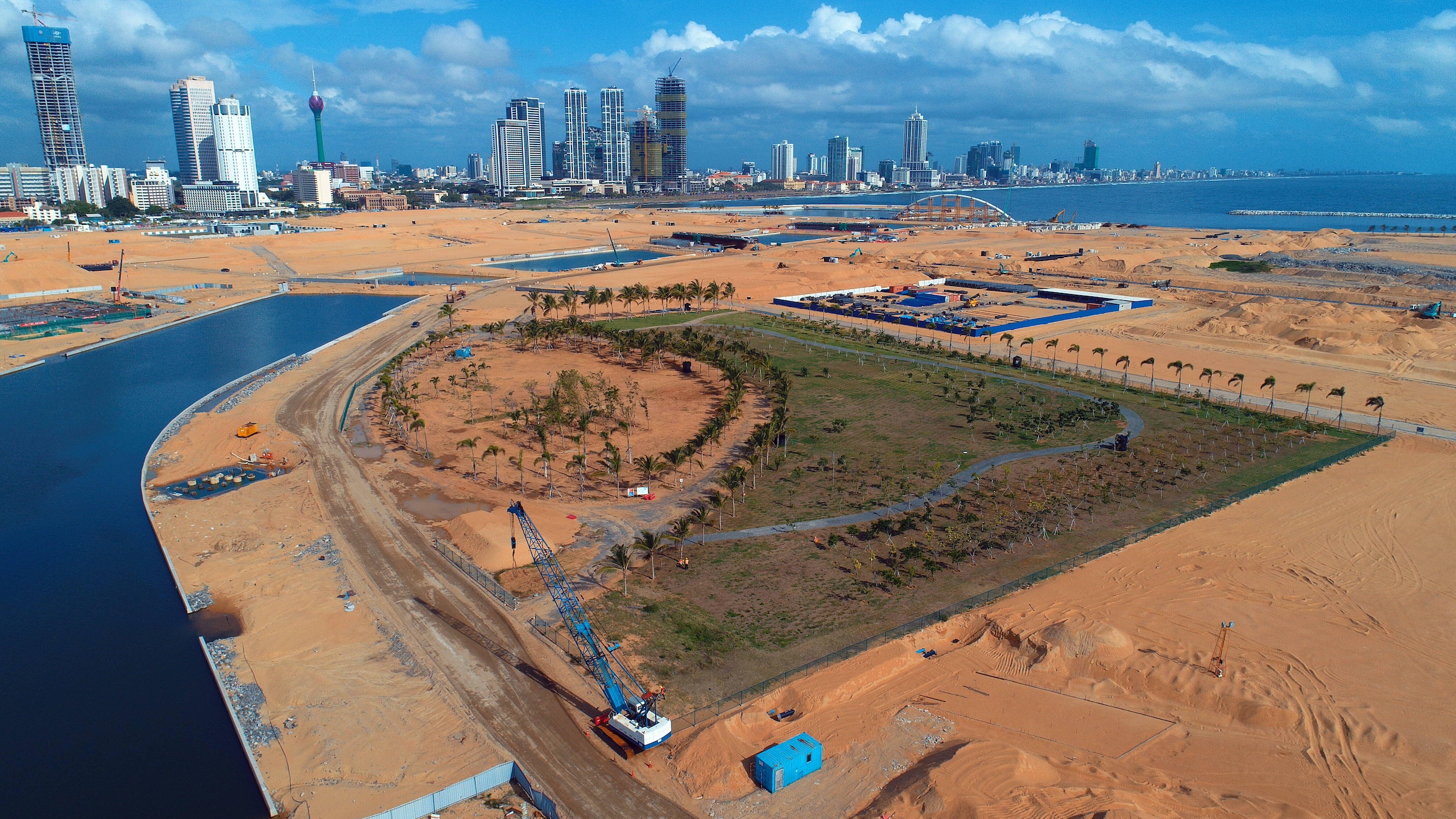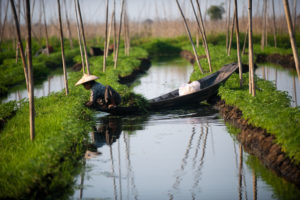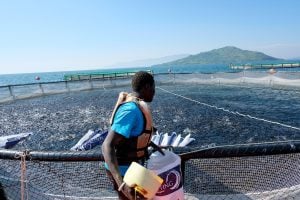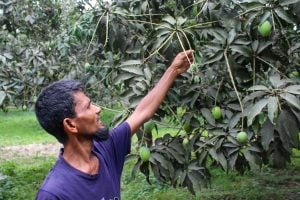In an article published recently in Global Environmental Change, Annah Lake Zhu and co-researchers analysed China’s approach to “nature-based solutions” (NbS) and the increasing appearance of the concept in China’s cooperation with Global South countries.
Dialogue Earth sat down with Dr Zhu, an assistant professor of environmental policy at Wageningen University in the Netherlands, to learn more. The interview has been lightly edited for length and clarity.
Dialogue Earth: NbS is a globally used concept, but you argue in your paper that it may have specific meanings in China. What are NbS with Chinese characteristics?
In a nutshell, they are large-scale, “eco-developmental” projects that blur the boundaries between the natural and the engineered. This means that NbS in China are not particularly concerned with preserving nature for its own sake. Rather, NbS are seen as a way to enhance and refine development.
This at times contrasts with NbS as used in the western lexicon – especially when promoted in the Global South – which can focus more on the nature side of things. National parks or nature preserves in Africa managed by western organisations, for example, can be considered NbS. Although western donors may claim otherwise, these NbS don’t really have a development focus.
NbS with Chinese characteristics approach nature as a broader concept, potentially involving the built environment too. For example, a quintessential Chinese NbS is large-scale tree planting to address all sorts of environmental problems related to pollution, flooding, sandstorms, and climate change. Often this planting is integrated within larger infrastructure projects. Such planting can be critiqued from a more preservationist perspective, because it does not protect or recreate natural ecosystems and may even undermine them. For most Chinese people, however, humans are considered a large part of nature. Thus critiques that large-scale planting does not preserve nature may fall on deaf ears.
In China the charge of greenwashing is not as big of a concernAnna Lake Zhu
A more extreme example of pushing the boundaries of NbS can be seen in hydrogen fuel. At a 2021 webinar, the head of China’s NbS for climate change platform [C+NbS] was asked if using water to make hydrogen fuel counts as NbS. She thought so. Those who want NbS to stay more “natural” would probably not agree. Indeed, they would likely say this constitutes a type of greenwashing via NbS. I think in China the charge of greenwashing – like strict nature preservation – is not as big of a concern.
Development is generally acknowledged as the larger goal of NbS and ecological components through NbS are considered a necessary means to securing better development (or what in China one might call a more “ecological civilisation”).
How is NbS appearing in China’s engagement with Global South countries?
China is exporting some domestic NbS approaches overseas, primarily in the Global South. This happens in three ways.
The first is longstanding. This is through multilateral and bilateral agreements between China and other Global South countries. Historically, such agreements have rarely focused on the environment, but in the past decade we see more and more. For instance, one of the nine key programmes adopted at the latest meeting of the Forum on China-Africa Cooperation (FOCAC) in 2021, focused on green development. This includes support for the Great Green Wall in Africa, a reforestation initiative aiming to combat desertification south of the Sahara Desert. Another example is the Lancang-Mekong Environmental Cooperation Center (LMEC), established in 2017 to facilitate environmental cooperation between China and five Southeast Asian countries. The purpose of the centre is to sustainably develop the Lancang-Mekong River while protecting drinking water and species diversity.
China’s ministries of natural resources and of ecology and environment, or the Chinese Academy of Sciences, typically play a role in these environmental initiatives, partnering directly with other sub-national institutions in the Global South.
Another form of cooperation related to this, but somewhat distinct, is triangular cooperation – where the UN plays a role as a third-party intermediary. This is much more recent, growing since China has played a more active role in the UN. One prime example is the UN Environment Programme’s International Ecosystem Management Partnership (IEMP). It promotes Global South cooperation on the environment through project-based interventions and is funded mostly by China.
Triangular cooperation allows Chinese institutions, primarily the Chinese Academy of Sciences, to learn from the experience of the UN and other UN member states that have a much longer history of doing this type of work.
Lastly, there are “greening infrastructure” projects. This is where infrastructure projects under China’s Belt and Road Initiative – roads, railways, dams, ports – are given additional ecological components to mitigate their environmental impacts. For example: fish passages in dams, elevated railways to allow for wildlife crossings, and vegetation belts to protect highways from sand. Greenwashing critiques most apply here, as the ecological components can be minor compared to the overall infrastructure. But the multi/bilateral and triangular cooperation projects noted above also retain a strong development focus. They target projects that use environmental means to better develop, even though they don’t involve heavy infrastructure.
Does China’s NbS cooperation with Global South countries differ between regions? If so, why?
China’s involvement in NbS across the Global South is highly uneven. Its cooperation with other Asian countries is the most frequent, especially in Southeast Asia where diplomatic ties have historically been strongest. This cooperation has been ongoing for a long time and is only now beginning to be actively re-branded as NbS. The cooperation is also mostly multi/bilateral or greening infrastructure projects.
The scale of involvement is lower in Africa and tends to fall more under triangular cooperation or greening infrastructure. This is because diplomatic relations with China have not historically been as strong and environmental cooperation is considered better mediated via the UN.
In Latin America, China’s environmental cooperation remains very minimal to date. This is not surprising, given that Latin America has often been seen in China as the “backyard” of the US. The first Latin American country to join the BRI, for example, was not until 2017. Thus Latin America has not seen any dedicated NbS projects established in partnership with China.
Why is China keen to promote NbS overseas?
China wants to become a global environmental leader – plain and simple. This is coming mostly from the leadership of the Communist Party. The push was initially domestic, with the “ecological civilisation” campaign beginning (perhaps a bit half-heartedly) around 2007. Today, the policy agenda of ecological civilisation is stronger than ever and has a huge impact on domestic development.
In 2018, President Xi Jinping outlined six principles on the construction of ecological civilisation. The final principle is all about ecological civilisation “going global”. According to Xi, China must build a global ecological civilisation and be “deeply involved in global environmental governance”.
The idea within Chinese leadership is to use NbS to make China’s ecological civilisation “go global”Annah Lake Zhu
This is where NbS comes in. NbS and ecological civilisation have strong resonance. They both aspire to a societal shift in which societies leverage and come into harmony with natural rhythms to realise shared prosperity. Yet, while ecological civilisation is a Chinese paradigm with limited global traction, NbS is a highly international term with worldwide appeal.
So, the idea within Chinese leadership is to use NbS to make China’s ecological civilisation “go global”. China has been doing NbS for decades, if not centuries, only not under that name. By adopting this highly international term, China can showcase to the world its ecological expertise.
How might policymakers and other stakeholders in Global South countries better engage with China’s emerging interest in NbS cooperation?
I think the first thing is to simply know that China is out there offering this type of eco-developmental cooperation. Most people outside of China – both in the west and the Global South – simply associate the country with global environmental destruction. There is of course validity to this point of view, but things are changing. China’s environmental turn domestically is very clear at this point. Globally, it is only beginning. But at the current moment – and likely even more so in the future – there are resources being offered that Global South countries can take advantage of.
For example, I recently visited the Chinese Academy of Science’s Xinjiang Institute of Ecology and Geography (XIEG). The institute’s motto is: “Where there are deserts, there is XIEG.” People working for the institute are going out to international conferences looking for partners, looking for students to cooperate with and share their expertise on anti-desertification practices and technologies. And they have a lot of experience and a lot of strategies that can work in arid regions in Central Asia and in Africa.
Simply knowing these resources are available is a start. In particular, it is valuable to know that there are other models of development assistance available that consider the environment, but are not so exclusively focused on nature protection for its own sake, as western environmental assistance in the developing world can be. This alternative approach is something I think that most Global South countries can benefit from.










